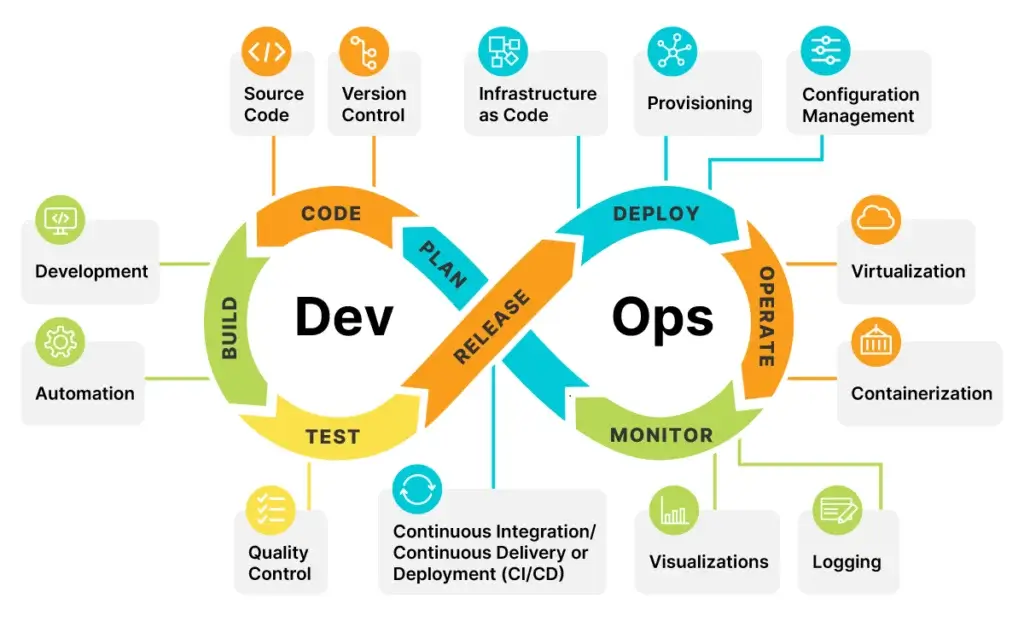Streamlining Software Development: A Comprehensive Guide to DevOps Practices and Agile Methodologies
by
-
5 minutes read
-
March 30, 2021

Introduction
In the fast-paced world of software development, staying ahead of the competition and delivering high-quality products on time is paramount. To achieve this, many organizations have turned to DevOps practices and Agile methodologies. In this blog, we will explore these two powerful approaches, understanding their key principles, benefits, and how they work together to streamline the software development lifecycle.
Part 1: Understanding Agile Methodologies
Agile methodologies emerged as a response to the traditional, rigid waterfall model. Agile embraces flexibility, collaboration, and iterative development to respond to changing requirements and customer feedback. Some popular Agile methodologies include Scrum, Kanban, and Extreme Programming (XP). Here are the key principles:
- Iterative Development: Agile breaks down the development process into small, manageable iterations called "sprints." Each sprint typically lasts two to four weeks, during which the team focuses on delivering specific features or functionalities.
- Continuous Customer Feedback: Agile emphasizes regular interactions with customers and stakeholders to gather feedback and make necessary adjustments throughout the development process.
- Self-Organizing Cross-Functional Teams: Agile encourages teams to be self-organizing and cross-functional, enabling them to take ownership of tasks and collaborate seamlessly.
- Prioritization and User-Centric Approach: Agile ensures that the highest-priority tasks are tackled first, maximizing the value delivered to end-users.
Part 2: Embracing DevOps Practices
DevOps, on the other hand, is a set of practices that bridge the gap between development and operations teams, aiming for continuous integration, continuous delivery, and continuous deployment. By fostering collaboration and automation, DevOps accelerates software delivery while maintaining stability. Here are the core principles:
- Collaboration and Communication: DevOps encourages close collaboration between development, operations, and other teams involved in the software lifecycle. Clear communication and shared responsibilities are essential for success.
- Infrastructure as Code (IaC): Treating infrastructure as code allows for automated and consistent provisioning and configuration, reducing manual errors and ensuring reproducibility.
- Continuous Integration (CI): Developers integrate code changes into a shared repository multiple times a day. Automated tests are run to catch integration issues early in the development process.
- Continuous Delivery (CD): Continuous delivery ensures that code changes are automatically built, tested, and prepared for deployment to production-like environments, ready to be released at any time.
Part 3: The Synergy of DevOps and Agile
DevOps, on the other hand, is a set of practices that bridge the gap between development and operations teams, aiming for continuous integration, continuous delivery, and continuous deployment. By fostering collaboration and automation, DevOps accelerates software delivery while maintaining stability. Here are the core principles:
- Shorter Feedback Loops: Agile‘s iterative approach facilitates continuous customer feedback, while DevOps‘ automation enables rapid deployment of new features based on that feedback.
- Continuous Improvement: Both DevOps and Agile embrace a culture of continuous improvement, encouraging teams to learn from their experiences and make data-driven decisions.
- Faster Time-to-Market: The combination of Agile‘s iterative development and DevOps‘ automated deployment allows for faster delivery of software to end-users, reducing time-to-market.
- Flexibility and Adaptability: Agile‘s adaptive nature ensures that changing customer requirements are effectively incorporated, while DevOps‘ automation minimizes the risk associated with frequent changes.
Conclusion
Embracing DevOps practices and Agile methodologies can significantly enhance the efficiency and effectiveness of software development. Agile‘s customer-centric approach, coupled with DevOps‘ automation and collaboration, enables teams to deliver high-quality software faster, respond to changing requirements, and maintain a competitive edge in the ever-evolving IT landscape. By fostering a culture of continuous improvement, organizations can create a harmonious synergy between DevOps and Agile, unlocking the full potential of their software development endeavors.